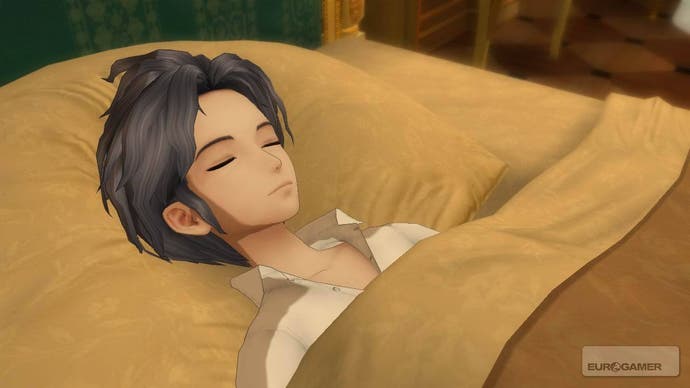Eternal Sonata
Hitting the right notes.
These odd interludes initially feel somewhat jarring, taking the player out of the game and forcing them to watch and listen to what is, essentially, a well-researched and passionate history of Chopin's life and music. However, they are mostly quite short - and as the game progresses, and parallels between the music, the history and the story become more clear, they actually form fascinating and welcome breaks from the game.
As you might expect from something with such a strong narrative, Eternal Sonata is a resolutely linear game - even to the extent of lacking a world map, with players instead wandering through entirely realised locations much like Final Fantasy X and its ilk. Each location is, however, stunningly beautiful. Taking the design flair which defined the visuals of Baten Kaitos and applying it to the Xbox 360's capabilities, the team at tri-Crescendo has crafted a world which is colourful, bright, and visually stunning, filled with fantastical shapes and designs.
The characters, too, are gorgeously designed. The visuals use what is arguably the best cel-shading technique ever seen in a videogame, rendering lavishly designed and varied characters with a consistent style and a surprisingly wide range of emotions and expressions. We were slightly disappointed to note that weapons and equipment don't change visibly as you equip new items, though - a concern which actually escalated into our largest gripe about the game as we played through.
Musical Chairs

The sad fact is that the quality of the content on display can't quite disguise the lack of quantity. For instance; the game boasts a wonderful battle system, which works by giving each of your characters a certain amount of time in which to act. This is just enough time to move around a bit, fire off some attacks, or use some healing items or special attacks. Location is vital, and as the game progresses it makes things more interesting by reducing the available time, but increasing the combat options at your fingertips, so things get progressively more challenging but also more open.
We have very few complaints about the combat. On a couple of occasions, we messed up our depth perception and ended up wasting a turn waving Chopin's baton in mid-air (no sniggering at the back), but with a little practice the system feels fluid and enjoyable. New special attacks are unlocked as you progress at a nice rate, and each character has a very different play style - some have ranged attacks, some need to be aimed, some can attack multiple enemies at once, and so on.
There's even a great system in place which changes your special attacks, and the form of your enemies, depending on whether you're standing in light or shadow. Early in the game, this is easy to manage - but as you progress, you find that some items and attacks cause spots of light or shadow to appear around you, some enemies cast pools of light, and there can even be moving cloud cover overhead, all of which has to be taken into account.

So far, so good - the game drops the ball not in terms of the system itself, but in terms of variety of enemies. Each zone in the game tends to have two, or at most three, types of enemies to throw at you. These enemies are usually fairly challenging to begin with, but once you work out a strategy for dealing with them, things get a bit less interesting... And when, half an hour later, you're still fighting the same enemy types over and over, the game becomes positively dull.
Each dungeon is a basic maze with a number of equipment upgrades and a lot of enemies, and we quickly found ourselves getting bored of each one and desperately pushing onwards for the next storyline section. All it would have taken to alleviate this would have been a larger number of enemy types - but in fact, enemy designs are so sparse that we started finding re-coloured versions of previous enemy models in some later dungeons, which was seriously disappointing.
Our enduring suspicion after completing Eternal Sonata is that the game was a victim of its own graphical beauty. Developers have been talking for years about how much work is involved in creating content for next-gen consoles - and Eternal Sonata's huge main quest and wide assortment of locations and characters clearly stretched tri-Crescendo's resources.

The variety of creatures and enemies suffered as a result, as did the option to have visible equipment. So, too, did the availability of side-quests or mini-games; there's a trading side-quest which is incredibly sparse and barely worth a mention, and a frankly horrible mini-game involving finding pieces of musical score and then playing them in "sessions" with NPCs, most of whom are seemingly tone-deaf and will give you great items for horrific, jarring compositions, played through an unresponsive and annoying interface.
Picking out the Notes
The wonderful narrative, great cast, enjoyable battle system and stunningly beautiful music and artwork are all compelling reasons to explore Chopin's deathbed dream. However, we can't escape the feeling that this isn't so much an eternal sonata, as an unfinished symphony.
It's disappointing to see such a fantastic game being let down by a simple lack of variety - but it's worth noting that this flaw drags the game down from being an instant classic to being simply a great game, and one which is undoubtedly worthy of your attention despite its failings. If only to check out Frederic Chopin's monster-bashing special moves.

